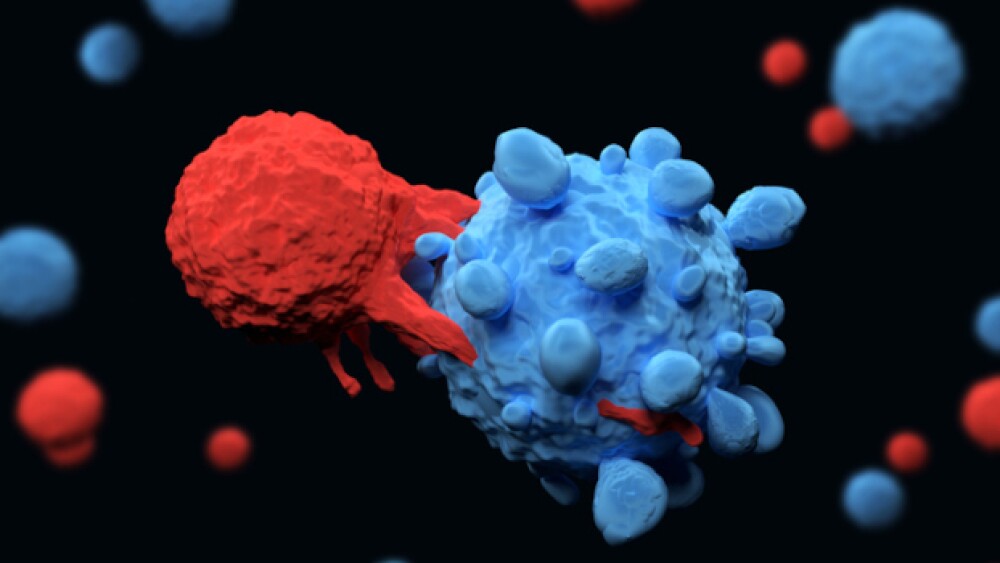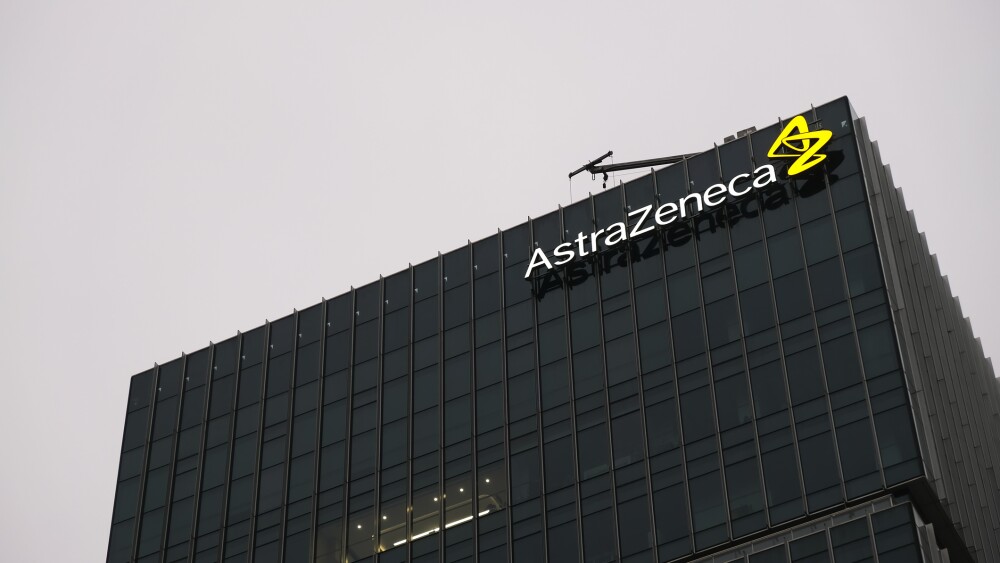Viralytics Also Reports CAVATAK Bladder Cancer Trial Results
10 October 2016, Sydney, Australia: Viralytics Limited (ASX: VLA, OTC: VRACY) today reported updated positive clinical data from the ongoing Phase 1b MITCI (Melanoma Intra-Tumoral CAVATAK and Ipilimumab) combination clinical trial and the completed Phase 1/2 CANON (CAVATAK in NON-muscle invasive bladder cancer) clinical trial of the company’s lead drug candidate, CAVATAKTM, at the European Society for Medical Oncology 2016 Congress in Copenhagen, Denmark. CAVATAK is a novel cancer immunotherapy based on a proprietary cold virus that has been shown to preferentially infect and attack cancer cells.
Patient Disease Control Rate of 82.4% and an Objective Response Rate of 53% Shown in MITCI Trial
Clinical findings from the Phase 1b MITCI trial evaluating the safety and anti-cancer activity of CAVATAK, Viralytics’ novel oncolytic virus, in combination with YERVOY®1 (ipilimumab), an anti-CTLA-4 checkpoint inhibitor, in late-stage melanoma patients were orally presented by one of the chairs of the “Immunotherapy of Cancer” poster discussion session. According to data from the first 17 patients evaluable for best overall tumour response assessment, a disease control rate2 (DCR) of 82.4 percent (14/17 patients) was demonstrated, including nine patients (53 percent) with an objective tumour response and five patients with stable disease. Of these 17 patients, 66 percent had been previously treated with at least one line of systemic therapy.
In a subset analysis of patients who have been previously treated with checkpoint inhibitor3 therapies, overall tumour responses and stable disease were observed in 87.5 percent (7/8) of patients. A preliminary overall objective tumour response rate of 38% (3/8 patients) in this trial subset compares favourably with that of a 10% (4/40 patients) response rate reported in a recent clinical analysis4 of advanced melanoma patients undergoing YERVOY treatment following prior administration of anti-PD1 checkpoint therapies.
Responses were observed in injected lesions, non-injected non-visceral lesions, and in distant non-injected visceral lesions, including lung and liver metastases.
CAVATAK and YERVOY Combination Well Tolerated
No dose-limiting toxicities, and no CAVATAK-related grade 3 or higher adverse events5 have been reported. There has been one YERVOY-related grade 3 fatigue adverse event (6%).
“These very promising response rates in heavily pre-treated patients, along with the low rate of adverse events, are very encouraging,” said Lead Investigator Dr Brendan Curti, MD, Director of the Biotherapy Program, the Earle A Chiles Research Institute at the Providence Cancer Center, Portland, Oregon. “Durable anti-cancer activity observed in the MITCI study patients with advanced metastatic disease is notable and compares favourably with published results from other therapies.”
Investigators reported a best overall response rate6 (ORR) of 57.1 percent in patients not previously treated with YERVOY, exceeding the published rates for either agent used alone (CAVATAK: 28.1 percent and YERVOY: ~15-20 percent) in patients with late-stage melanoma.
Further results included a best ORR of 57.1 percent (4/7 patients) and a DCR of 100% (7/7 patients) in advanced metastatic melanoma patients with stage IV M1c disease, as well as objective responses in 52.9 percent (9/17 lesions) and disease control in 94.1 percent (16/17 lesions) in individual non-injected visceral target lesions.
Initiated in 2015, the MITCI trial is currently being conducted at four US sites and has enrolled 20 of a planned 26 advanced melanoma patients to date.
“We are very pleased with these updated results, which further support the potential for CAVATAK to drive enhanced activity of the checkpoint inhibitors such as YERVOY,” said Dr Malcolm McColl, Managing Director of Viralytics. “It is particularly pleasing to witness the enhanced activity in these difficult-to-treat patients with a low rate of adverse events. These data strengthen our belief that CAVATAK has significant potential in combination with the checkpoint inhibitors across a range of cancer indications.”
As members of a new class of cancer treatments known as immunotherapies, both CAVATAK and YERVOY are designed to enhance the body’s own defences in fighting cancer. CAVATAK is an investigational agent based on a proprietary bioselected common cold virus that has been shown to preferentially infect and kill cancer cells. YERVOY, an immune checkpoint inhibitor, is a humanized monoclonal antibody that works by taking the brakes off the body’s natural immune response to cancer.
The poster presentation and accompanying slide presentation, entitled “The MITCI (phase 1b) study: A novel immunotherapy combination of coxsackievirus A21 and ipilimumab in patients with advanced melanoma”, are available from the Viralytics website at http://www.viralytics.com/our-pipeline/scientific-presentations/.
Tumour Targeting and Anti-Cancer Activity Seen in CANON Trial
Updated results from the completed Phase 1/2 CANON clinical trial were also reported today in a poster presentation. The CANON study investigated the tolerance of escalating doses of CAVATAK delivered directly into the bladder through a catheter, a technique known as intravesicular administration, over an eight-day period in 16 first-line patients with non-muscle invasive bladder cancer (NMIBC) prior to routine surgical removal of the tumour tissue.
In the first stage of the trial, nine patients were treated by intravesicular administration of monotherapy CAVATAK. In the second stage, seven patients received a sub-therapeutic dose of the chemotherapy, mitomycin C, plus CAVATAK, also delivered intravesically.
Clinical activity of CAVATAK was demonstrated by evidence of viral replication and notable signs of tumour inflammation following either single or multiple administrations of CAVATAK in multiple patients. A complete response was observed in one out of the three patients in the highest-dose cohort of the monotherapy.
Whether used alone or in combination with mitomycin C, CAVATAK facilitated notable changes within NMIBC tissue biopsies taken from treated patients by inducing increases in immune cell infiltrates and up-regulating immune checkpoint inhibitory genes such as PD-L1, compared to tissue samples taken from untreated patients.
In addition, the intravesicular administration of CAVATAK either as a single agent or in combination was generally well tolerated with no Grade 2 or higher product-related adverse events.
“The tumour targeting and anti-cancer activity of CAVATAK is very encouraging,” stated Professor Hardev Pandha, Professor of Medical Oncology, University of Surrey and Principal Investigator of the CANON study.
“The CAVATAK-mediated increases in immunological heat within the tumor micro-environment with regards to immune-cell infiltrates and up-regulation of immune checkpoint molecules suggest possible increased anti-tumor activity when CAVATAK is used in combination with immune checkpoint blockade strategies. These changes are likely to signal a strong local and systemic anti-tumor immune response and again highlight the potential benefits for combination of CAVATAK with the checkpoint inhibitors.”
According to Dr McColl, “These positive results suggest that CAVATAK is highly suited for application in NMIBC, and in particular in combination with checkpoint inhibitor therapy. There is a high unmet need for better therapies for NMIBC patients and we look forward to further advances in our clinical program in this setting.”
The poster presentation and accompanying slide presentation, entitled “Phase I/II CANON study: Oncolytic immunotherapy for the treatment of non-muscle invasive bladder (NMIBC) cancer using intravesical coxsackievirus A21”, are available from the Viralytics website at: http://www.viralytics.com/our-pipeline/scientific-presentations/.
About Viralytics Ltd:
Viralytics is developing oncolytic immunotherapy treatments for a range of cancers. The company’s lead investigational product, CAVATAK™, is currently being studied in Phase 1 and 2 clinical trials for the treatment of melanoma, as well as bladder and lung cancers. CAVATAK is a proprietary formulation of the common cold Coxsackievirus Type A21 (CVA21) that preferentially binds to specific ‘receptor’ proteins highly expressed on multiple cancer types. CAVATAK acts to kill both local and metastatic cancer cells through cell lysis and the potential generation of an immune response against the cancer cells – a two-pronged mechanism of action known as oncolytic immunotherapy.
Based in Sydney Australia, the company is listed on the Australian Securities Exchange (ASX: VLA) while Viralytics’ ADRs also trade under VRACY on the US OTCQX International market. For more information, please visit www.viralytics.com.
1 Yervoy® is a trademark of the Bristol-Myers Squibb Company.
2 Disease control rate includes patients that live with the cancer without it worsening. It includes patients that achieve a complete tumour response, partial tumour response or stable disease. A complete tumour response (immune related Response Criteria) is the disappearance of all tumour burden. A partial tumour response is a reduction in the total tumour burden by greater that 50%. Progressive disease is a 25% increase in tumour burden and all other cases are stable disease.
3 Checkpoint inhibitors include the anti-PD1 antibodies such as nivolumab (OPDIVO, trademark of Bristol Myers Squibb Company) and pembrolizumab (KEYTRUDA, trademark of Merck & Company Inc) and the anti-CTLA4 antibodies such as ipilimumab (YERVOY, trademark of Bristol Myers Squibb Company).
4 Bowyer et al; British Journal of Cancer (2016) 114, 1084–1089 et al; British Journal.
5 Grade 3 adverse events are severe or medically significant but not immediately life-threatening; Grade 4 adverse events are life-threatening with urgent intervention indicated; Grade 5 is death related to an adverse event.
6 Overall response rate includes either complete or partial responses that may occur at any time after initiation of treatment. A complete tumour response (immune related Response Criteria) is the disappearance of all tumour burden. A partial tumour response (immune related Response Criteria) is a reduction in the total tumour burden by greater than 50%. 6 Bowyer et al; British Journal of Cancer (2016) 114, 1084–1089 et al; British Journal. of Cancer




